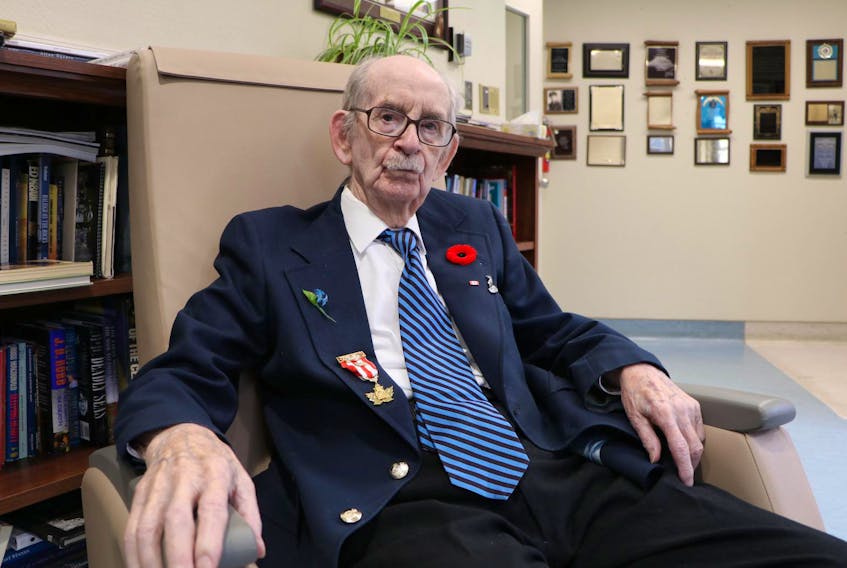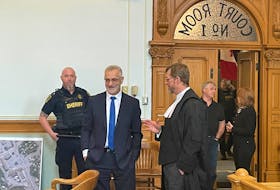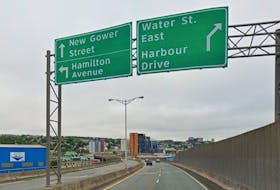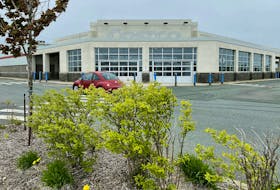On D-Day in 1944, it was a waiting game for George Thomas Hudson and his fellow members of the 59th Newfoundland Heavy Regiment, Royal Artillery.
The regiment was still in England, anxiously waiting for deployment across the English Channel, to join in the Allied fight in Normandy, France.
With the navy battleships providing the heavy artillery fire prior to Allied troops storming the beaches, the big guns of the regiment would not be needed until the beachheads were secured and the Allied armies began their attack inland.
“We were happy, relieved that the attack was happening, that it would lead to the end of the war,” Hudson, 97, said from the Caribou Memorial Veterans Pavilion in St. John’s.
“We were lined up. The infantry had to go on to the coast. The artillery was the last to go.”
Newfoundland and Labrador was still a colony of Great Britain during the Second World War — it wouldn’t become part of Canada until 1949.
People from the colony volunteered for service in the Royal Navy, Royal Canadian Navy, the Merchant Navy, the Royal Air Force, Royal Canadian Air Force, and the British and Canadian armies.
Within the ranks of the British army, Newfoundlanders and Labradorians had formed into the 59th Newfoundland Heavy Regiment, Royal Artillery that had been stationed in England defending the coast, and the 166th (Newfoundland) Field Regiment that fought in Africa and Italy.
Hudson said during the days waiting after that June 6 attack, reports trickled back of heavy casualties but they learned that the Allies had gained the important foothold it needed.

“We were hoping and praying that there wouldn’t be any casualties,” Hudson said. “We were glad when they got a foothold, because we thought then we were going to win.”
Canadian Afghanistan war veteran Tom Skelding recently gave an address at a Remembrance ceremony in Conception Bay South to mark the 75 years since D-Day.
“The Normandy invasion was not easy. The beaches were littered with German landmines, barbwire, heavy artillery batteries and machine-gun nests,” he told the crowd. “Harbours along the coastline would have to be secured for hundreds of ships that would be needed to ferry food, medical supplies, weapons, and fresh troops after the invasion.
“Once in France, the Allied armies would need to get fuel to continue the invasion of occupied France.
“The coastline from Denmark to the south of France was known as Fortress Europe. A massive Canadian, British and American forces crossed the English Channel to engage the German forces on a 50-mile stretch of heavily defended coast of Normandy, France.”
Skelding described how Allied troops fought their way to Normandy from different areas of the beaches codenamed Utah and Omaha on which the Americans landed; Gold and Sword on which the British landed; and Juno on which the Canadians landed.
“Canadians and Newfoundlanders who were part of squadrons of the Royal Canadian Air Force attacked German beach defences and inland positions while destroyers and supporting craft of the Royal Canadian Navy shelled targets,” he said. “About 15,000 Canadian troops came ashore at Juno Beach and established a beachhead along a five-mile stretch.
“To the east, over 450 Canadians of the First Canadian Parachute Battalion parachuted inland before dawn and engaged the enemy.”
Skelding said victory would come at a terrible cost as the Canadians suffered the most casualties of any division in the British army group that day — many paying the ultimate price with their lives.
“Total Allied casualties on D-Day reached more than 10,000 including 1,074 Canadians of which 359 were killed in action,” he said. “About 5,400 Canadians lie in cemeteries in Normandy from the complete Normandy campaign. Others would return home with injuries to body and mind that they’ve carried throughout their civilian life.”
Hudson closes his eyes as he tries to recall the many brave Allied troops he fought with, particularly those who were killed or wounded. He says he is one of the lucky ones who survived.
It would be early July 1944 before his regiment joined in the fight at Normandy, launching heavy artillery shells into the German positions for the first time on July 6.

Hudson said the regiment was eager to do its part.
“We arrived in France and started to move inland. The streets weren’t very wide, a real old village with old houses,” he said. “The engineers made sure there would be no problem moving down the streets.
“It was easy, too, to make a foxhole because we had to dig in to be ready in case of an attack.”
The 59th began its advance in support of the 1st British Corps' advance on Caen. The 1st British Corps included the Canadian 3rd Division.
Hudson recalls they moved forward about a mile and half each day. In one large farming area, the Germans had killed all the cows — hundreds of them “cows everywhere” and the smell was overwhelming.
“They did it to make us miserable,” he said, shaking his head as if still recalling the stench even after these 75 years. “The engineers poured gas over them and burned them.”
News from up ahead kept the spirits of the regiment members up.
“We heard from other soldiers that they had captured the head of the German police, the Gestapo, and that he took poison,” Hudson said. “They were talking about how he took his own life.”
Throughout the push to northern Germany, the 59th was in the thick of the battle.
On May 2, 1945, the 59th made their last assault pounding Bergdorf, a suburb of Hamburg, Germany. The next day Hamburg surrendered and north Germany was secure.
Hudson says when they drew close to Hamburg, there wasn’t much to see.
“It was flattened,” he said. “All you could see were the chimneys standing.”
D-DAY AT 75: Remembering the heroes and sacrifices of Atlantic Canada:
- VIDEO: The road to D-Day
- Why a school in France is named for a Pictou soldier
- U-boat hunter Roderick Deon returns to Juno Beach for D-Day
- Sound of gunfire rang in P.E.I. soldier’s ears
- North Nova Scotia Highlanders at the sharp end of D-Day invasion
- STORY MAP: Follow the D-Day experience of the North Nova Scotia Highlanders
- 12 North Nova Scotia Highlanders murdered at Abbaye d’Ardenne
- ‘It was noisy as the devil,’ says St. John’s torpedo man
- 59th Newfoundland Heavy Regiment was eager to do its part
- A P.E.I. dispatcher’s long, uncertain journey to Normandy
- LAURENT LE PIERRÈS: D-Day invasion was best birthday present for my Dad
- ‘Sight of our boys being blown up ... wouldn’t leave my mind:’ Bedford veteran, author
- Dartmouth veteran's first combat mission was D-Day invasion
- Halifax air gunner had bird’s-eye view of D-Day
- ‘We had everything fired at us but the galley sink’: Yarmouth County veterans share war and D-Day memories
- New Waterford veteran has lived good life after surviving D-Day invasion
- JOHN DeMONT: An old film clip of D-Day shows the nature of courage
- D-Day landing map’s origins a mystery to army museum historians









